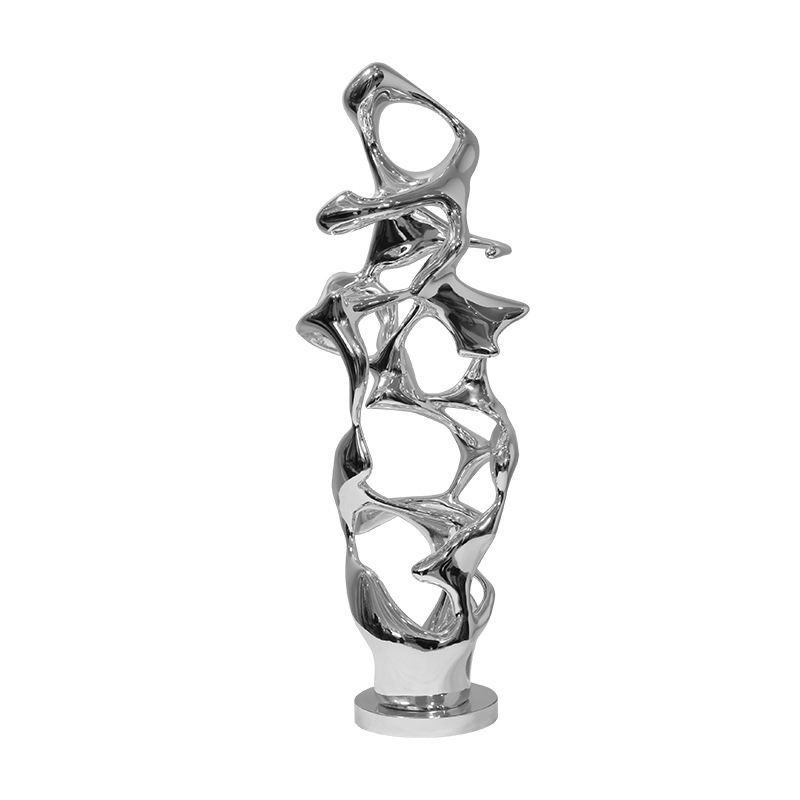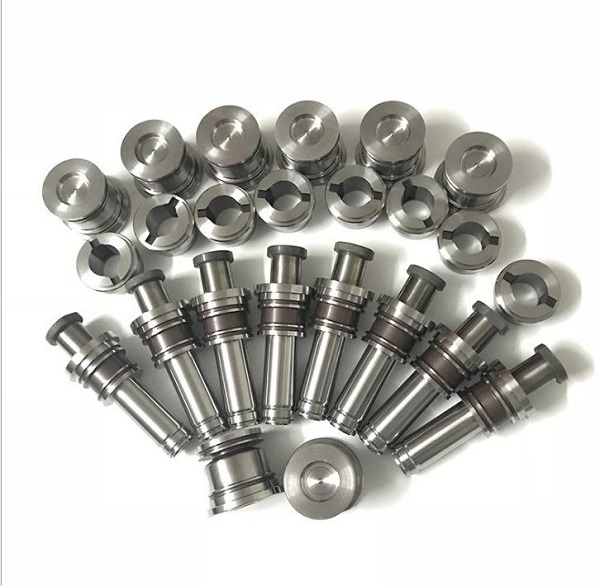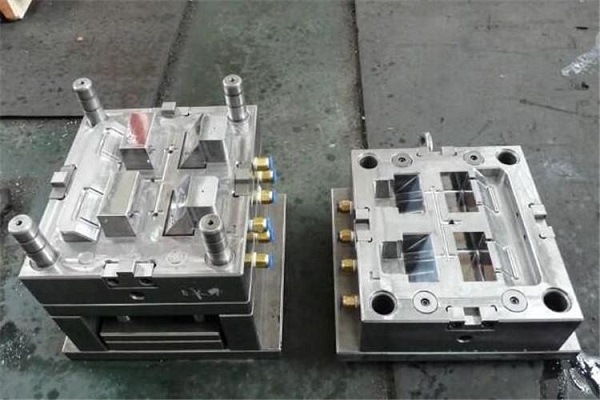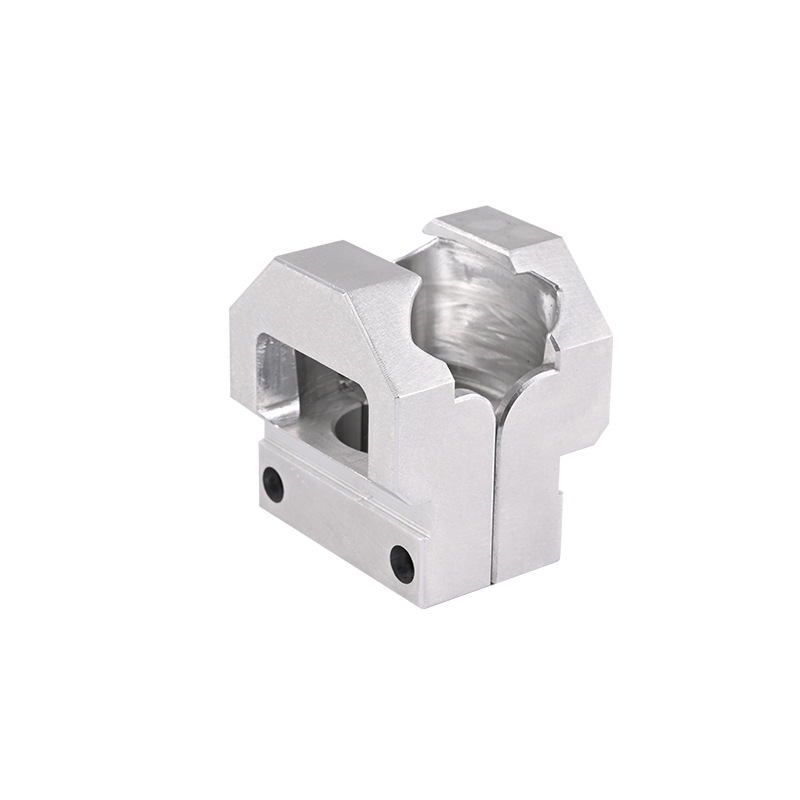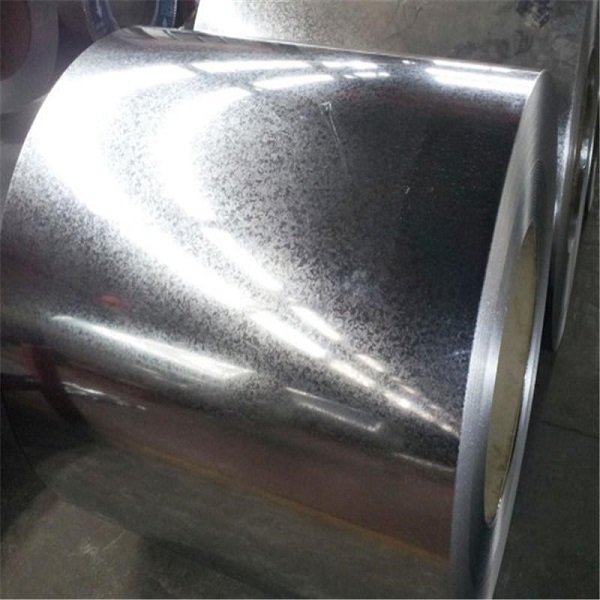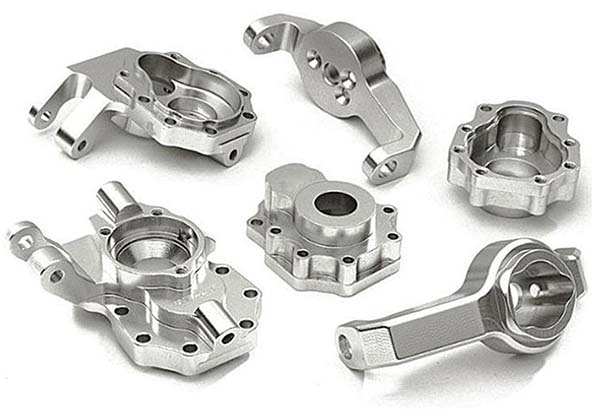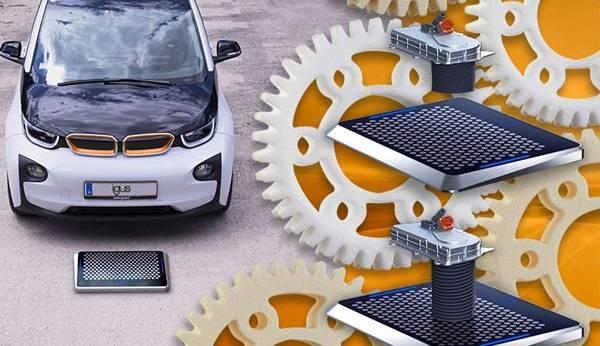Introduction
In the world of engineering and manufacturing, the humble rivet plays a crucial role in ensuring the integrity and functionality of countless structures and products. Rivets are permanent mechanical fasteners that have been used for centuries to join two or more components together. Their versatility, reliability, and cost - effectiveness make them an indispensable part of various industries, from aerospace and automotive to construction and electronics.
The importance of rivets in the field of connection cannot be overstated. They provide a strong and durable bond that can withstand significant stress and vibration, making them ideal for applications where safety and reliability are paramount. For Yigu Technology xample, in the aerospace industry, rivets are used to assemble the fuselage, wings, and other critical components of aircraft. These rivets must be able to endure extreme conditions, including high altitudes, temperature variations, and aerodynamic forces, to ensure the safe flight of the aircraft. In fact, a single commercial airliner can use hundreds of thousands of rivets, highlighting their essential role in aircraft construction.
In the automotive industry, rivets are used in the assembly of car bodies, chassis, and engine components. They help to reduce the weight of the vehicle while maintaining its structural integrity, which is crucial for improving fuel efficiency and performance. Additionally, rivets are commonly used in the construction of buildings, bridges, and other infrastructure projects. They provide a reliable connection between structural members, ensuring the stability and safety of the entire structure.
Given the wide range of applications and the critical role that rivets play, understanding the different types of rivets and their specific uses is essential for engineers, designers, and manufacturers. This knowledge allows them to select the most appropriate rivet for a particular application, taking into account factors such as the materials being joined, the environmental conditions, and the required strength and durability of the connection. In the following sections, we will explore the various types of rivets available, the materials they are made from, and their common applications in different industries.
What is a Rivet and How Does It Work?
A rivet is a permanent mechanical fastener designed to join two or more parts together. It serves as a reliable and long - lasting connection method in various applications. Structurally, a typical rivet consists of three main parts: the head, the shank, and the tail.
The head of the rivet is the larger, often rounded or shaped end that provides a bearing surface against one of the components being joined. It prevents the rivet from being pulled through the hole. The shank is the cylindrical body of the rivet that passes through the holes in the components to be connected. The tail is the end opposite the head, which is deformed during the installation process to create a second bearing surface and secure the connection.
The installation process of a rivet is a crucial step that determines the strength and integrity of the joint. There are several common methods for installing rivets, each with its own advantages and suitable applications.
One of the most common installation methods is pneumatic hammering. Pneumatic rivet guns are widely used in industrial settings due to their high - speed operation and ability to deliver a large amount of force in a short time. These guns use compressed air to drive a piston that strikes the rivet, deforming the tail and creating a tight connection. Yigu Technology For example, in the automotive industry, where a large number of rivets are used in the assembly of car bodies, pneumatic rivet guns can significantly increase the efficiency of the riveting process. A skilled operator can install a pneumatically - driven rivet in just a few seconds, which is much faster than manual methods.
Manual hammering is another method, especially useful for small - scale projects or in situations where access to pneumatic equipment is limited. A hammer is used to strike the tail of the rivet, gradually deforming it until the components are firmly joined. Although this method is more time - consuming compared to pneumatic hammering, it offers greater control over the riveting process, making it suitable for delicate or precision applications. For Yigu Technology instance, in some artistic metalworking projects, manual hammering allows the craftsman to carefully shape the rivet tail to achieve a specific aesthetic or functional result.
Hydraulic pressing is employed when a more controlled and uniform force is required. Hydraulic riveting machines use hydraulic pressure to deform the rivet. This method is often used in applications where high - strength joints are essential, such as in the aerospace industry. In aircraft manufacturing, hydraulic pressing ensures that the rivets are installed with consistent force, meeting the strict quality and safety standards of the aerospace sector. The force applied by hydraulic systems can be precisely adjusted, allowing for the installation of rivets in a wide range of materials and thicknesses.
During the installation process, regardless of the method used, it is essential to consider the grip length and the size of the hole. The grip length is the length of the rivet shank that is required to pass through the components being joined. It should be carefully selected to ensure that the rivet provides a secure connection without being too long or too short. If the grip length is too short, the rivet may not fully engage with the components, resulting in a weak joint. On the other hand, if it is too long, the excess length of the rivet tail may need to be trimmed, which can be a time - consuming and potentially messy process.
The size of the hole also plays a crucial role. The hole should be slightly larger than the diameter of the rivet shank to allow for easy insertion. However, if the hole is too large, the rivet may not provide a tight fit, reducing the strength of the joint. In general, the recommended hole size is typically specified by the rivet manufacturer and may vary depending on the type and material of the rivet.
In summary, the installation of a rivet is a well - defined process that requires careful consideration of various factors. Whether using pneumatic, manual, or hydraulic methods, the goal is to permanently deform the rivet in a way that creates a strong and durable connection between the components. This connection must be able to withstand the forces and stresses that the assembled structure will encounter during its service life.
Materials Used for Rivets
Rivets are crafted from a diverse range of materials, each selected for its unique properties to suit specific applications. The choice of material is crucial as it directly impacts the performance, durability, and cost - effectiveness of the riveted joint. Here is a detailed look at the common materials used for rivets, presented in a tabular format for easy comparison:
| Material | Key Characteristics | Common Applications |
| Aluminum | - Lightweight, which is beneficial in applications where weight reduction is a priority, such as in the aerospace and automotive industries. - Good corrosion and weathering resistance, making it suitable for outdoor and marine applications. - Easy to deform, allowing for simple installation, especially with hand - operated rivet tools for blind rivets. | - Aircraft structures to reduce weight while maintaining strength. - Automotive body panels for weight - saving and corrosion resistance. - Marine equipment and boats due to its resistance to saltwater corrosion. |
| Stainless Steel | - Exceptional corrosion and weathering resistance, even in harsh environments. It can withstand exposure to moisture, chemicals, and high temperatures without rusting or deteriorating. - High strength, providing reliable and long - lasting connections. | - Construction of bridges, buildings, and other infrastructure projects in coastal areas or areas with high humidity. - Chemical processing plants and oil refineries where resistance to corrosive substances is essential. - Food processing equipment to meet hygiene and corrosion - resistance requirements. |
| Copper | - Excellent electrical and thermal conductivity, making it ideal for applications where these properties are crucial, such as in electrical and electronic components. - Relatively easy to form, allowing for efficient manufacturing processes. | - Electrical connections in wiring, circuit boards, and electrical appliances. - Heat exchangers and radiators where heat transfer efficiency is important. |
| Steel (Carbon Steel) | - Carbon steel rivets, usually with a solid or hollow shank, offer high strength. Low - carbon steel is preferred due to its greater ductility compared to high - carbon steel, which is more rigid. - Require the use of pneumatic or hydraulic equipment for installation, which can be more complex and costly than other installation methods. | - General construction and manufacturing applications where strength is a primary concern, such as in the assembly of heavy machinery, industrial equipment, and large - scale metal structures. |
| Brass | - An alloy of zinc and copper, brass has exceptional corrosion resistance and strength. It also has the advantage of not sparking, which is a critical safety feature in certain environments. - Aesthetically pleasing appearance, making it suitable for applications where both functionality and visual appeal are important. | - Oil and gas industry, especially in areas where there is a risk of ignition, such as in refineries and oil rigs. - Decorative applications in furniture, jewelry, and architectural details. |
When selecting a rivet material, it is essential to consider the compatibility of the rivet material with the components being fastened. Some materials can react with each other in the presence of moisture or other environmental factors, creating a galvanic corrosion cell that can weaken the joint over time. For Yigu Technology example, when using an aluminum rivet to fasten a steel component, there is a risk of galvanic corrosion due to the difference in the electrochemical potential of the two metals. To mitigate this risk, protective coatings or washers can be used, or a more compatible rivet material can be chosen. Additionally, factors such as the cost of the material, availability, and ease of installation should also be taken into account when making a decision.
Different Types of Rivets
Blind Rivets
Blind rivets, also known as pop rivets, are one of the most commonly recognized types of rivets. Their design makes them particularly useful in situations where access to the rear of the two parts being fastened is limited or impossible. A blind rivet assembly consists of two main components: a shank and a stem.
The shank is the larger, more substantial part of the rivet. It is inserted into a precisely drilled hole in the components to be joined. The stem, which has a slightly larger diameter at the end near the shank, is then pulled using a handheld or pneumatic rivet gun. As the stem is pulled, the shank plastically deforms. This deformation causes the shank to expand and clamp the two parts together firmly, creating a secure connection.
One of the distinct features of blind rivets is that the stem is designed to snap off at a specific clamping force. When this happens, it creates an audible popping sound, which is how they got the name "pop rivets." Blind rivets come in a variety of end - configurations. They can have an open - end, which is suitable for general applications where a basic connection is required. Closed - end blind rivets are used when a more sealed or protected connection is needed, such as in applications where moisture or debris could potentially enter the joint.
Large flange blind rivets provide a larger bearing surface, which can be beneficial when fastening to softer materials or when a more distributed load is desired. Grooved blind rivets have grooves on the shank, which can improve the grip and connection strength in certain applications. Countersunk flanges are used when a flush - mounted appearance is required, especially in applications where the aesthetics of the surface are important, such as in some consumer products or decorative metalwork.
Blind rivets are widely used in sheet metal constructions. For Yigu Technology example, in the manufacturing of metal enclosures for electronics, blind rivets are used to assemble the various sheet metal panels. They are also commonly used in the automotive industry for attaching interior trim panels, where access to the backside of the panels may be limited. In the construction of trailers and mobile homes, blind rivets are used to fasten the outer sheet metal skins to the frame, providing a quick and efficient way to create a strong connection.
Solid Rivets
Solid rivets are the oldest form of rivets and have a long - standing history of use in various industries. They have been used in the construction of ships, large steel structures like bridges, and many other applications where a reliable and robust connection is essential.
A solid rivet is composed of a shank and a head. The head of a solid rivet can come in various shapes, each with its own advantages and applications. Rounded heads are common in applications where a smooth and aerodynamic surface is desired, such as in some aircraft components. Conical heads can provide a more tapered and secure fit, especially in applications where the rivet needs to be seated firmly in a countersunk hole. Countersunk heads are used when a flush - finished surface is required, similar to the use of countersunk screws. Flat heads are suitable for applications where a flat - topped connection is needed, and oval heads can offer a combination of strength and a unique appearance.
The installation process of solid rivets is relatively straightforward but requires precision and the right tools. First, the solid rivet is placed into a pre - drilled hole in the components to be joined. Then, a hammer or a rivet gun is used to permanently deform the straight end of the rivet into the required head shape. In some cases, to make the deformation process easier and more efficient, the rivet is softened by heating it until it turns red - hot. This heating process, known as hot - riveting, allows the rivet to be more easily shaped.
During the deformation process, the shank of the rivet expands to fill any clearance in the drilled hole. This ensures a tight and secure fit. As the shank expands, it forms a second head on the opposite side of the original head, clamping the two materials firmly together. This double - headed configuration provides a very strong and reliable connection. Solid rivets are used in critical applications such as vehicle bodies, where they need to withstand significant stress and vibration. In the construction of large - scale industrial machinery, solid rivets are also used to ensure the integrity of the structural members, as they can provide a long - lasting and robust connection that can endure the harsh operating conditions of industrial environments.
Tubular Rivets
Tubular rivets have a form that is similar to solid rivets, but with a distinct difference. On the straight side of the rivet, there is a hole that travels a short distance into the shaft. This hole gives tubular rivets their unique characteristics and advantages.
The presence of the hole in the shaft makes tubular rivets easier to install compared to solid rivets. When installing a tubular rivet, less force is required to deform it. This is because during the installation process, only the thin walls of the hole need to be flared outwards to secure the joint. In contrast, solid rivets require the entire shank to be deformed, which typically requires more force.
Due to their ease of installation and the relatively thin walls of the hole, tubular rivets are often used in applications where the load - bearing requirements are not as high. One common application is in HVAC ducting. In HVAC systems, tubular rivets are used to join the various sections of ductwork together. The ability to install them with less force makes the installation process faster and more efficient, especially when working with large - scale ducting systems. The relatively lightweight nature of tubular rivets also makes them suitable for this application, as it helps to keep the overall weight of the ductwork down.
They are also used in other low - risk applications where a simple and cost - effective fastening method is needed. For example, in some consumer product manufacturing, such as the assembly of small metal - framed furniture or simple metal fixtures, tubular rivets can be used to quickly and easily join the components together. However, it's important to note that because of their thinner walls and the nature of their construction, tubular rivets are not as strong as solid rivets and may not be suitable for applications where high stress or heavy loads are expected.
Drive Rivets
Drive rivets are a type of blind rivet with a unique design and installation method. They consist of a short shank and a protrusion on the head of the rivet.
The installation process of drive rivets is quite different from that of other blind rivets. Once the drive rivet is placed into a pre - drilled hole in the components to be joined, the protrusion on the head of the rivet is driven with a hammer. This hammering action causes the shank of the rivet to deform outwards, clamping the joint firmly together. One of the significant advantages of drive rivets is that they do not require a special riveting tool like a standard blind rivet. This makes them a convenient choice in situations where access to a rivet gun or other specialized tools is limited, or when the cost of purchasing and using such tools is not justifiable.
Drive rivets are typically used in commercial sheet metal fabrication. In the production of metal enclosures, storage containers, or other sheet - metal - based products, drive rivets can be used to quickly assemble the different parts. Their ease of installation and the fact that they can be installed with a simple hammer make them a popular choice for small - scale fabricators or for projects where speed and simplicity are key factors. However, like other blind rivets, the strength of the connection provided by drive rivets may not be as high as that of solid rivets, so they are best suited for applications where the loads are relatively moderate.
Split Rivets
Split rivets have a distinct design that sets them apart from other types of rivets. Their shaft is split into two separate legs, which gives them their name.
The installation process of split rivets is relatively simple. First, the split rivet is installed into a pre - drilled hole in the components to be joined. Then, using a hammer, the two legs of the rivet are separated and flattened against the rear component. This flattening action creates a secure connection between the components.
Split rivets are often used in applications where a light - duty connection is required. They are commonly used on plastics, where their relatively soft nature and easy installation make them a suitable choice. In the textile industry, split rivets can be used to attach metal components to fabric, such as attaching eyelets or decorative metal pieces. They are also used on thin metal sheets, especially in applications where the strength requirements are not overly demanding. For example, in the assembly of small - scale metal - framed picture frames or lightweight metal - based handicrafts, split rivets can be used to join the components together. However, due to their design and the fact that they are relatively lightweight, split rivets are not as robust as blind rivets or solid rivets. They may not be suitable for applications where high stress, heavy loads, or significant vibration are present.
Self - Piercing Rivets
Self - piercing rivets are unique among rivets for two main reasons. First, they do not require pre - drilled holes, which simplifies the installation process. Second, the rivet does not pass completely through the second plate, which is different from most other types of rivets.
The installation process of self - piercing rivets is a high - speed and precise operation. First, the two plates to be joined are placed into a press. The self - piercing rivet is held in a blank holder and then pressed into the top sheet. As the rivet is pressed, it pierces into the second sheet without passing all the way through. A die on the rear side helps to prevent the rivet from passing through and also aids in the formation of an embossed section on the rear plate. This embossed section, along with the deformed rivet, creates a strong and secure connection between the two plates.
This high - speed process can create a very robust connection. In fact, self - piercing rivets can provide a watertight connection, which makes them suitable for applications where water resistance is important. One of the industries where self - piercing rivets are commonly used is the aerospace industry. In aircraft manufacturing, self - piercing rivets are used to join different components of the aircraft structure, such as the fuselage panels. Their ability to create a strong and watertight connection, along with the fact that they can be installed quickly, makes them a valuable choice in this industry. They are also used in the automotive industry, especially in the production of lightweight vehicle bodies, where the use of self - piercing rivets can help to reduce the weight of the vehicle while maintaining its structural integrity.
Conclusion
In conclusion, rivets are an essential and versatile fastening solution with a wide range of applications across numerous industries. The knowledge of different rivet types and their uses is of utmost importance for anyone involved in design, engineering, or manufacturing processes.
Throughout this article, we have explored the fundamental aspects of rivets, starting from their basic structure and installation methods. We learned that the installation process, whether through pneumatic hammering, manual hammering, or hydraulic pressing, requires careful consideration of grip length and hole size to ensure a secure and durable connection.
The materials used for rivets, including aluminum, stainless steel, copper, steel, and brass, each offer unique properties that make them suitable for specific applications. Aluminum's lightweight and corrosion - resistant nature is ideal for the aerospace and automotive industries, while stainless steel's high corrosion resistance is crucial in construction and chemical processing plants. Copper's excellent conductivity makes it a top choice for electrical applications, and brass's non - sparking property is vital in the oil and gas industry.
We also delved into the various types of rivets. Blind rivets, with their ease of installation from one side, are widely used in sheet metal constructions. Solid rivets, the oldest form, provide a robust connection and are used in critical applications such as vehicle bodies and large - scale industrial machinery. Tubular rivets, with their easy - to - install design, find their place in HVAC ducting and other low - risk applications. Drive rivets, a type of blind rivet, are convenient in commercial sheet metal fabrication due to their simple installation with a hammer. Split rivets are suitable for light - duty applications on plastics, textiles, and thin metal sheets, and self - piercing rivets, with their unique no - pre - drilled - hole feature, are used in high - speed, robust connection applications in the aerospace and automotive industries.
Understanding these aspects allows engineers and designers to make informed decisions when choosing the right rivet for a particular application. By selecting the appropriate rivet type, material, and installation method, they can ensure the strength, durability, and reliability of the connection, which is crucial for the performance and safety of the final product or structure.
So, whether you are working on a small DIY project or a large - scale industrial production, take the time to assess your needs and choose the right rivet. The right choice can make a significant difference in the quality and longevity of your work, ensuring that your connections are as strong and reliable as possible.

